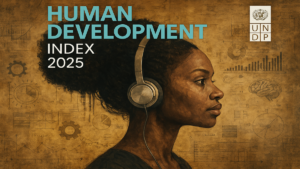The United Nations’ World Meteorological Organization (WMO) has issued a stark warning, revealing that greenhouse gas concentrations in the atmosphere reached unprecedented levels in 2022. The surge in the three primary culprits – carbon dioxide (CO2), methane, and nitrous oxide – sets the stage for intensified climate impacts, including soaring temperatures, extreme weather events, and rising sea levels.
WMO Chief’s Concern:
Despite persistent warnings from the scientific community and numerous climate conferences, WMO Chief Petteri Taalas expresses deep concern, stating that humanity is still “heading in the wrong direction.” The bulletin precedes the upcoming COP28 UN climate summit in Dubai, emphasizing the urgency of addressing the escalating crisis.
Paris Agreement Targets and Current Scenario:
The 2015 Paris Agreement aimed to limit global warming to “well below” two degrees Celsius above pre-industrial levels, with an aspiration for 1.5 degrees Celsius. However, the global mean temperature in 2022 surpassed the 1.5-degree target, reaching 1.15 degrees above the 1850-1900 average. Taalas warns that 2023 is poised to become the warmest year on record.
Greenhouse Gas Concentrations:
In 2022, carbon dioxide concentrations rose to 418 parts per million, methane to 1,923 parts per billion, and nitrous oxide to 336 parts per billion. These values represent alarming increases, standing at 150%, 264%, and 124% of pre-industrial levels, respectively.
Dominance of CO2 and Persistent Impact:
Carbon dioxide, contributing 64% to the warming effect, reached concentrations 50% above pre-industrial levels in 2022. The WMO emphasizes that even rapid emission reductions to net zero won’t immediately mitigate the impacts due to the extended lifespan of CO2 in the atmosphere.
Methane Mystery and Impact:
Methane, the second-largest contributor to climate change (16% of the warming effect), saw concentrations steadily rising in 2022. Despite its shorter atmospheric lifespan, approximately 10 years, methane’s potent warming impact poses a significant challenge. Taalas notes uncertainties in understanding the reasons behind methane’s continued increase.
Nitrous Oxide’s Unprecedented Surge:
Nitrous oxide, responsible for around 7% of the warming effect, witnessed a higher increase in 2022 than ever recorded in modern times. This surge raises concerns about the accelerating pace of greenhouse gas emissions.
Global Responsibility and G20 Contributions:
Approximately 80% of greenhouse gas emissions originate from G20 countries, underscoring the global responsibility in combating climate change. The bulletin emphasizes the need for urgent action to reduce fossil fuel consumption.
Key Concerns and Information Gaps:
While the scientific community possesses a comprehensive understanding of climate change, uncertainties persist, particularly regarding the carbon cycle. The WMO calls for greater information on feedback loops, such as increased carbon emissions from soils and decreased carbon uptake by oceans. Tipping points, where irreversible changes occur, also raise concerns, such as the Amazon rainforest transitioning from a carbon sink to a carbon source due to deforestation.




 India's Progress in Human Development In...
India's Progress in Human Development In...
 CareEdge State Rankings 2025: Maharashtr...
CareEdge State Rankings 2025: Maharashtr...
 Top 10 Most Expensive Cities To Live Aro...
Top 10 Most Expensive Cities To Live Aro...







